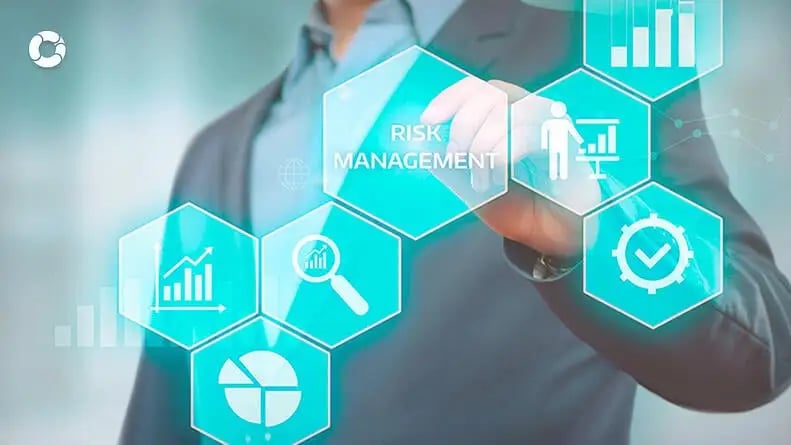The Tactical Importance of Risk Management in Building Market Advantage
The Tactical Importance of Risk Management in Building Market Advantage
Blog Article
Discovering the Significance of Risk Management for Effective Decision-Making Techniques
In the intricate world of company, Risk Management arises as a critical aspect in the decision-making procedure. The capacity to recognize potential threats and opportunities, and strategize appropriately, can lead to the distinction in between success and failing.
Understanding the Concept of Risk Management
Risk Management, an important component in decision-making, is usually misinterpreted or oversimplified. Risk Management involves regimented and organized methods, making use of data and informative assessments. From economic uncertainties, legal responsibilities, tactical Management errors, to mishaps and all-natural disasters, it attends to various dangers - importance of risk management.
The Duty of Risk Management in Decision-Making Processes
In the world of strategic planning and service procedures, Risk Management plays an important role in decision-making processes. It helps in recognizing potential risks and unpredictabilities that can impact the achievement of company goals. By mapping these threats, companies can formulate techniques to mitigate their influence, making certain business connection and stability. Risk Management hence ends up being an important tool in decision-making, assisting leaders to make enlightened choices based upon an extensive understanding of the threats included. It motivates a positive approach, enabling organizations to prepare for and prepare for feasible future situations. This dramatically lowers the chance of negative consequences, advertising extra reliable and reliable decision-making strategies. Risk Management offers as an essential element in the decision-making processes of any company.

Just How Risk Management Enhances Strategic Preparation
In the context of calculated planning, Risk Management plays a pivotal duty. Starting with the identification of possible dangers, it even more extends to the execution of Risk reduction measures. The role of Risk Management is not fixed but vibrant, as it demands consistent monitoring and adjusting of approaches.
Determining Potential Dangers

Applying Risk Reduction
Having actually developed the relevance of recognizing possible threats, the following step is to explore Risk mitigation. This process involves developing and implementing techniques to handle determined dangers successfully. It is a critical facet of critical preparation as it improves decision-making by reducing potential negative outcomes. Risk reduction approaches can vary from Risk avoidance, Risk transfer, to run the risk of reduction. Each technique should be tailored to the specific Risk, considering its prospective impact and the organization's Risk tolerance. Reliable Risk mitigation calls for a deep understanding of the Risk landscape and the potential impact of each Risk. This understanding makes it possible for companies to prioritize threats and designate resources properly, ensuring that one of the most substantial dangers are dealt with initially.
Surveillance and Changing Techniques
Though Risk mitigation is a critical action in tactical planning, continual tracking and modification of these approaches is just as vital. This continuous process permits companies to recognize new risks and reassess existing ones, making certain the implemented methods continue to be effective in the ever-changing company setting. It also supplies a chance to assess the success of the Risk Management actions, allowing modifications to be made where needed, more boosting tactical planning. Effective surveillance and change require the use of analytics and essential performance signs (KPIs) to determine effectiveness. These tools supply useful data-driven understandings that can educate critical decision-making. Consequently, monitoring and changing Risk Management methods is a crucial component for improving an organization's resilience and tactical planning.
Case Studies: Effective Risk Management and Decision-Making
In the world of service and finance, effective Risk Management and decision-making usually serve as the pillars of flourishing enterprises. These instances highlight the value of astute Risk Management in decision-making processes. These instances underscore the essential duty why not check here of Risk Management in tactical decision-making.
Tools and Strategies for Effective Risk Management
Navigating the intricate labyrinth of Risk Management requires the ideal collection of methods and devices. These devices, such as Risk registers and warmth maps, help in identifying and examining potential risks. Techniques include both measurable approaches, like sensitivity analysis, and qualitative techniques, such as SWOT evaluation. These aid in focusing on risks based on their prospective effect and chance. Risk feedback techniques, a crucial component of Risk Management, include approving, staying clear of, moving, or mitigating risks. Monitoring and managing dangers, with routine audits and testimonials, make certain that the strategies continue to be effective. With these methods and tools, decision-makers can navigate the complex landscape of Risk Management, thereby promoting notified and efficient decision-making.
Future Trends in Risk Management and Decision-Making Methods
As we discover the large landscape of Risk Management, it comes to be apparent that the devices and strategies utilized today will certainly proceed to develop. The idea of Risk society, where every participant of a company is aware and involved in Risk Management, will certainly obtain more prominence. These patterns advertise an even more proactive and inclusive strategy in the direction of Risk Management and decision-making.
Conclusion

Risk Management therefore becomes a vital tool in decision-making, read what he said helping leaders to make informed selections based on a detailed understanding of the dangers involved. Risk mitigation approaches can vary from Risk evasion, Risk transfer, to take the chance of decrease (importance of risk management). Efficient Risk reduction requires a deep understanding of i was reading this the Risk landscape and the prospective influence of each Risk. Risk action strategies, a vital element of Risk Management, entail approving, staying clear of, transferring, or mitigating dangers. The principle of Risk culture, where every participant of a company is conscious and involved in Risk Management, will certainly gain a lot more prominence
Report this page